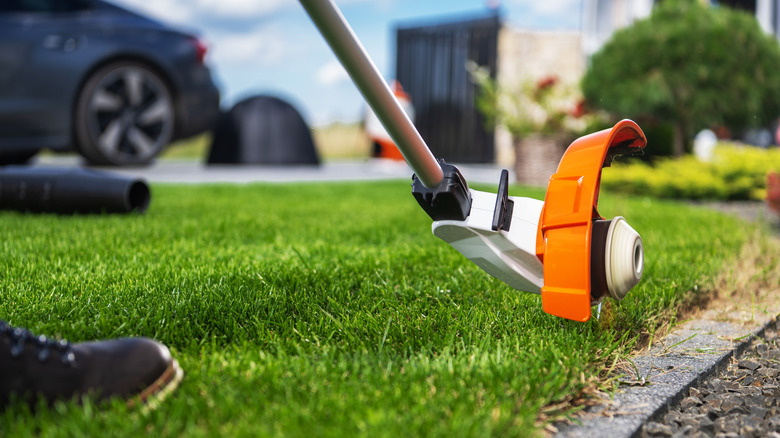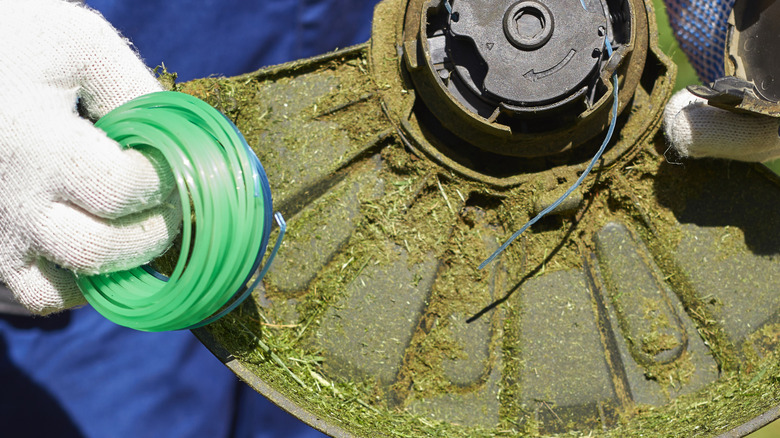Effortlessly Change The String On An Electric Weed Eater With One Handy Tip
Weed eaters can be one of the most essential grass cutting tools in your arsenal. But when the string in your weed whacker becomes regularly tangled or keeps getting caught, then it might be time to replace that string for a new one. If you're swapping string out, use the same brand and size string to keep your weed eater working at its best.
Weed eaters, of course, allow you to trim grass where lawnmowers can't reach. It's really the best way to properly edge your lawn, unless you want to get out there on your hands and knees with a pair of scissors! Most string needs to be replaced about once every 3 months. Think about changing it every spring, as well, since nylon can weaken over the winter. You'll know that you need to replace your string if it becomes too short, worn, or discolored. Old string also tends to break often. Sometimes, the line just won't feed correctly, either. These are all signs you need a new string.
You can also tell you need a new line if the performance of your weed whacker suffers. When changing your line, the size and brand of your string is important. It's best to use string especially designed for your model.
The thickness of weed eater string is key
When changing out your weed eater line, remember that the most important factor is the line thickness. The line gauge is often related to how high-powered the weed eater is, and whether or not it's gas or electric. Most weaker electric trimmers use a thinner string between 0.65 and .080 inches. Heavier-duty weed eaters, usually gas-powered, often need a gauge between .095 and .155 inches. You can determine the line you need and the horsepower of a line trimmer by checking your user's manual.
If you put the wrong string gauge in, your weed whacker isn't likely to work well, if at all. You'll know you've installed a gauge that's too thin because it will break often. If you put in string that's too thick, then it can get stuck and won't unspool properly. Heavy duty gauges in an underpowered tool can even wind up damaging the motor since a thicker line puts more stress on it. Worse, using the wrong kind of string in your weed eater can sometimes invalidate the tool's warranty, so you'll be stuck with the replacement costs if it does break.
Tool brands often offer different color-coded lines for different gauges, but those colors can differ across brands. Sticking with your same brand of string can help keep things less confusing. So can using the same thickness of line currently in your weed eater. You can always check your owner's manual first to be sure. Now that you have this down, you can move on to other skills — like converting a weed eater to a brush cutter.

